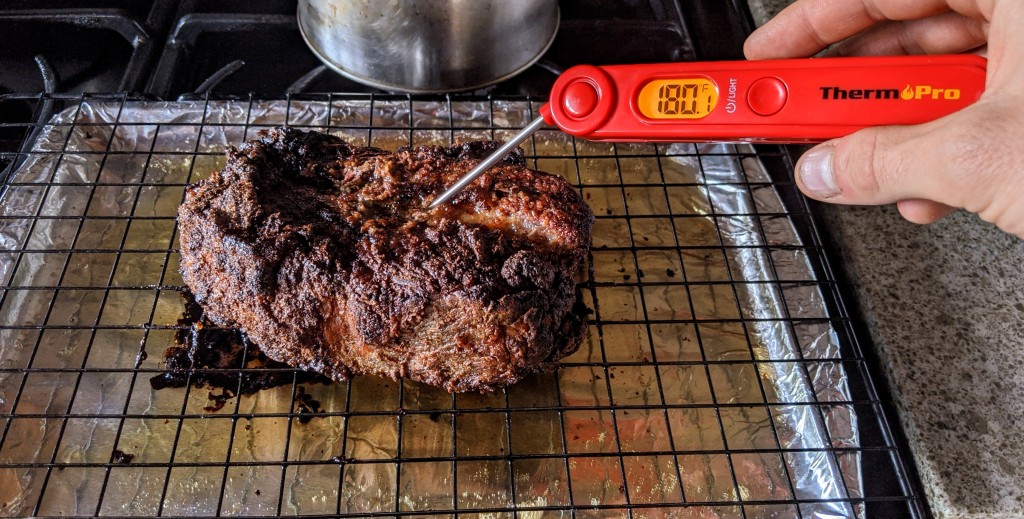How to Check Meat Temperature Without a Thermometer: Handy BBQ Tips
Written By James Morgan
Barbecue enthusiasts often find themselves in a bind when their trusty meat thermometers are missing or malfunctioning. Learning how to check meat temperature without a thermometer is not just about improvisation but also about acquiring skills that can save your barbecue session. In this article, we will dive into various methods to ensure your meat is cooked perfectly even without the usual tools.

The Hand Test Method
The hand test method is one of the most popular among grillers. It's an old-school technique used to gauge the doneness of meat, especially steak.
How to Use the Hand Test
- Rare: Press the tip of your index finger to the tip of your thumb. The muscle at the base of your thumb should feel soft and yielding.
- Medium Rare: Touch your thumb to your middle finger. The muscle will feel slightly firmer but still give way easily.
- Medium: Bring your thumb to your ring finger. The muscle will feel significantly firmer.
- Well Done: Touch your thumb to your pinky finger. The muscle at the base of your thumb will feel tight and rigid.
This method is ideal for steaks but can be adapted for other cuts of meat.

Cut and Peek
If you don't mind a small incision, cutting into your meat to check its color and juices is a practical way to determine doneness.
Visual Cues
- Poultry: The juices should run clear, and the meat should be white throughout with no pink.
- Pork: Pale, white to light pink interior.
- Beef: The color will vary from red to pink to brown depending on the desired level of doneness.
For barbecuers who primarily cook burgers or other ground meats, ensure the juices run clear, which is a strong indicator that the meat is thoroughly cooked.

Using a Metal Skewer
The metal skewer method is another great technique. Insert a clean metal skewer into the center of the meat, then touch it to your lower lip or wrist.
Temperature Indicators
- Cold: The meat is undercooked.
- Warm: The meat is medium.
- Hot: The meat is well done.
This method works best for thicker cuts of meat and roasts.

Butterfly and Flatten
For cuts like chicken breast or pork chops, you can slice them in half or flatten them to ensure they cook evenly. This technique provides a larger surface area for cooking and allows you to monitor the meat more easily.
Advantages
- Even Cooking: Reduces the chances of undercooked centers.
- Quick Cooking: Helps in speeding up the grilling process.
Butterflying and flattening meat can be particularly useful during busy barbecue gatherings.
Using Time as a Guide
Experienced grillers often use cooking times as a guideline. While this method isn't foolproof, it can be highly effective when combined with the above techniques.
General Timings
- Steaks: 4-5 minutes per side for medium-rare.
- Poultry: 8-10 minutes per side for boneless cuts.
- Pork: 6-8 minutes per side for chops.
Keep in mind that these times can vary based on meat thickness and grill temperature.
Combining Methods for Accuracy
Combining these methods can improve your accuracy in determining meat doneness. For example, use the hand test for preliminary checks, followed by a small cut to see the internal color and juices.
Additional Resources
For more detailed and specific guidelines, you can explore resources like What to do without a meat thermometer and Perfect Steaks without a Thermometer.
FAQs
1. Is it possible to measure meat temperature without equipment?
Yes, there are several methods like the hand test, cut and peek, and using a metal skewer to gauge the meat's doneness without a thermometer.
2. How accurate is the hand test method?
The hand test method is fairly accurate for steaks and fillets but may require some practice to master.
3. What should I do if I am unsure about the meats doneness?
If you're uncertain, it's best to err on the side of caution and cook the meat slightly longer, ensuring it's safe for consumption.
As an Amazon Associate, I earn from qualifying purchases.



